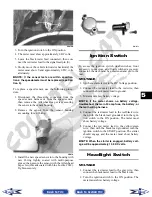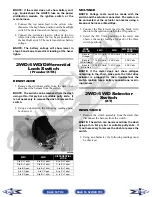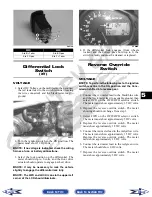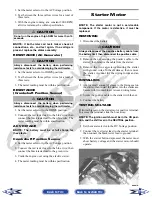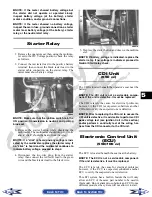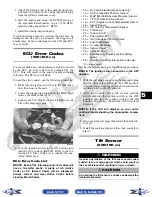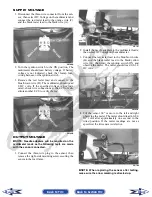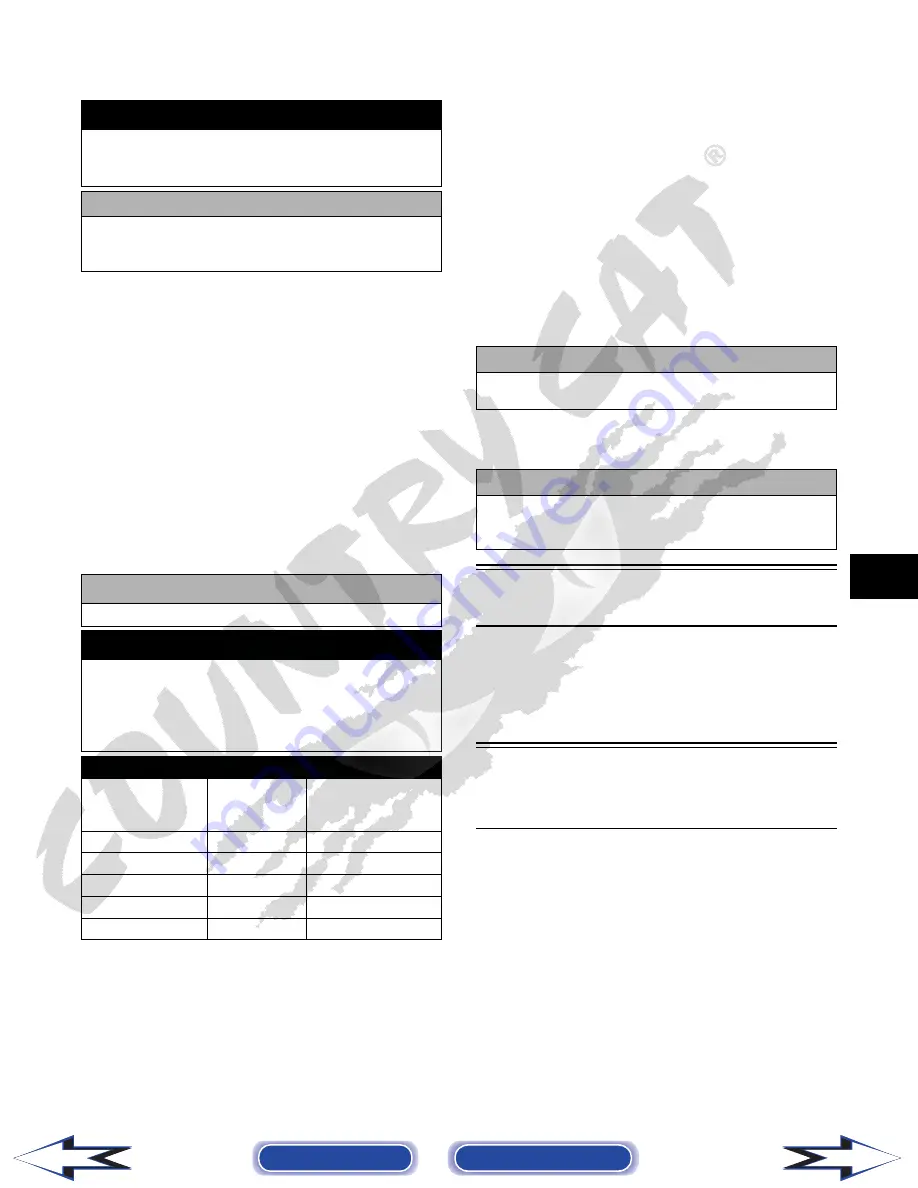
5-3
5
5. Add clean distilled water to bring fluid level to the
UPPER level line.
6. Using a multimeter, test the battery voltage. The
meter must read at least 12.5 DC Volts for a fully
charged battery.
NOTE: At this point, if the meter reads as speci-
fied, the battery may be returned to service (see
step 10).
7. If the meter reads less than specified voltage,
charge the battery using the following guidelines.
A. When using an automatic battery charger,
always follow the charger manufacturer’s
instructions.
B. When using a constant-current battery charger,
use the following Battery Charging Chart.
NOTE: If the battery voltage is 11.5 DC Volts or
less, some chargers may “cut off” and fail to
charge. If this occurs, connect a fully charged
booster battery in parallel (positive to positive and
negative to negative) for a short period of time
with the charger connected. After 10-15 minutes,
disconnect the booster battery leaving the charger
connected and the charger should continue to
charge. If the charger “cuts off,” replace the bat-
tery.
8. After charging the battery for the specified time,
remove the battery charger and allow the battery to
sit for 1-2 hours.
9. Connect the multimeter and test the battery volt-
age. The meter should read at least 12.5 DC Volts.
If the voltage is as specified, the battery is ready
for service.
NOTE: If voltage in step 9 is below specifications,
charge the battery an additional 1-5 hours; then
retest. Recheck electrolyte level and the battery is
ready for service.
10. Place the battery in the battery compartment; then
coat the battery posts and cable ends with a light
coat of multi-purpose grease.
11. Connect the battery cables (positive cable first);
then install the battery hold-down.
RPM Limiter
NOTE: The UTV is equipped with a CDI unit/ECU
that retards ignition timing when maximum RPM is
approached. When the RPM limiter is activated, it
could be misinterpreted as a high-speed misfire.
Testing Electrical
Components
All of the electrical tests should be made using the
Fluke Model 73 Multimeter and when testing peak
voltage, the Peak Voltage Reading Adapter must be
used. If any other type of meter is used, readings may
vary due to internal circuitry. When troubleshooting a
specific component, always verify first that the fuse(s)
are good, that the bulb(s) are good, that the connec-
tions are clean and tight, that the battery is fully
charged, and that all appropriate switches are acti-
vated.
NOTE: For absolute accuracy, all tests should be
made at room temperature of 68° F.
! WARNING
Battery acid is harmful if it contacts eyes, skin, or
clothing. Care must be taken whenever handling a
battery.
! CAUTION
Never use electrolyte (sulfuric acid) to “top off” the
battery. Use only distilled water or severe battery
damage may occur.
! CAUTION
Never exceed the standard charging rate.
! WARNING
An overheated battery could explode causing severe
injury or death. Always monitor charging times and
charge rates carefully. Stop charging if the battery
becomes very warm to the touch. Allow it to cool
before resuming charging.
Battery Charging Chart (Constant-Current Charger)
Battery Voltage
(DC)
Charge State
Charge Time
Required
(at 1.5-2.0 Amps)
12.5 or more
100%
None
12.2-12.4
75%-99%
3-6 hours
12.0-12.2
50%-74%
5-11 hours
11.0-11.9
25%-49%
13 hours (minimum)
11.5 or less
0-24%
20 hours (minimum)
! CAUTION
Before installing the battery, make sure the ignition
switch is in the OFF position.
! CAUTION
Connecting cables in reverse (positive to negative
and negative to positive) can cause serious damage
to the electrical system.
Back to TOC
Back to Section TOC
Next
Back





















